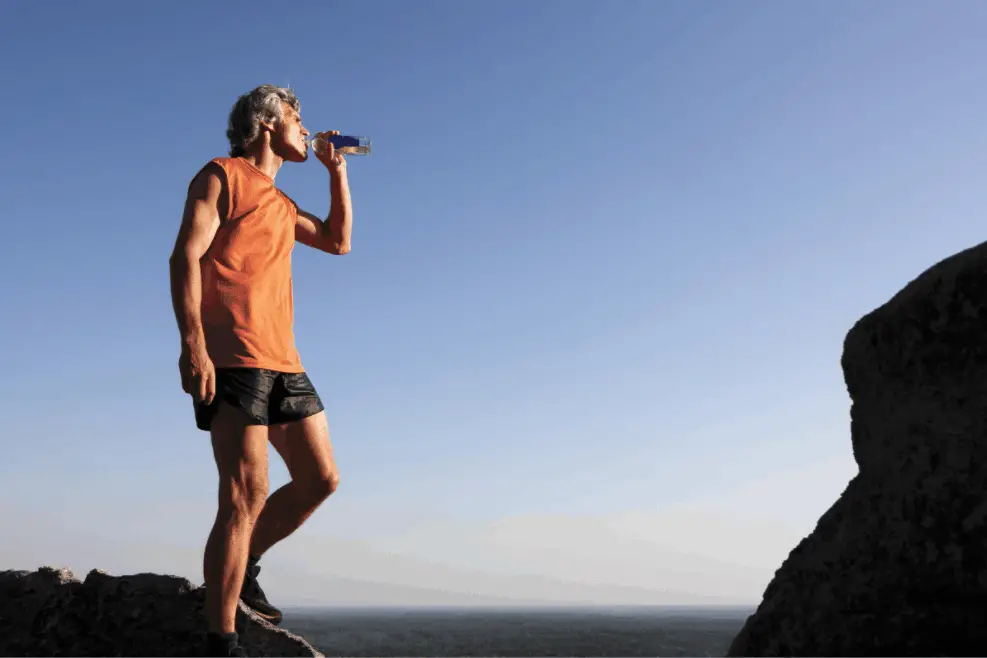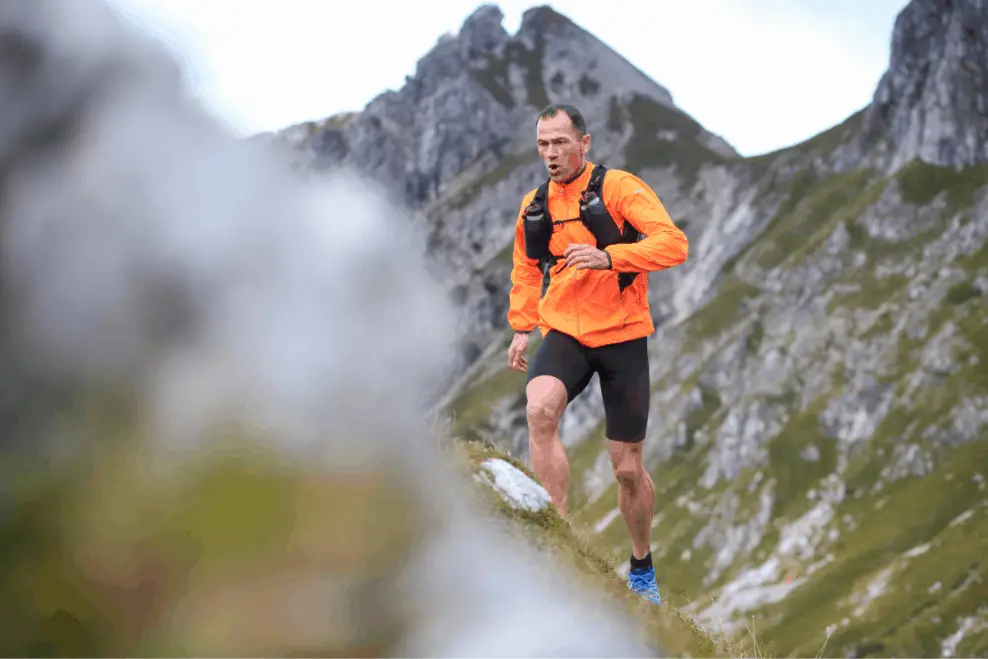This article is evidence-based, verified by Dr Adil Maqbool
We’ve seen a massive amount of resources spent training at altitude in the decades since the 1968 Olympics. Many endurance athletes seem to benefit from this, varying from a potential 1% differential to as big as 3% (Carl Valle, 2019). Therefore, altitude training for peak performance should be considered necessary for athletes wanting to increase their output substantially.
Team sports, such as soccer and rugby, experimented with training camps to get the benefits of living big, but for a good reason, some stayed home. The proliferation in altitude tents on the market, hypoxic environments, and even the altitude training mask were indicators of elevation replicating the common Joe believes.
Table of Contents
What Is Altitude Training?
Typically we say 7,000 to 8,000 feet above sea level and more as we apply to “high altitude” or “high elevation” in sports medicine. Low altitude is about 4,000 meters or less below sea level (Ben Levine, 2016)
You obtain less oxygen per intake in conditions where the altitude is higher than you would at lower altitudes. This ensures that each input can give the muscles less amount of oxygen, but in the long run improve peak performance.
This may seem like a negative thing, but living at higher altitudes and being used to “thinner” air, your breathing may increase the athletic performance of elite athletes in sports at lower altitudes.
You obtain less oxygen per intake in higher elevation conditions than you would at lower altitudes. This ensures that each input can give the muscles less amount of oxygen. MMA fighters are often seen using elevation training as a way to improve their cardiovascular output even when they’re increasing calories during a bulking season.
This may seem like a negative thing, but living at higher altitudes and being used to “thinner” air-breathing may increase the athletic performance of elite athletes in sports at lower altitudes.
Throughout high-altitude exercise, competitors sound as though they are placing more energy into doing as well as lower to sea level.
When elite athletes acclimatize to higher altitudes, they develop more red blood cells that require sufficient oxygen to be transferred to their blood. If they perform at lower altitudes, when there is more oxygen available, they get an average boost to the muscles.
This impact of blood expansion could improve output in elite athletes by 1 to 2 million. While that seems like a small improvement, the distinction between missing the final cut for a professional team and winning an award can be the difference.
Science Behind Altitude Training For Peak Performance

‘Live high-train low’ invokes the beneficial effects of altitude when, first, eliminating the need for a decrease in training intensity and, second, persistent hypoxia’s adverse consequences.
Altitude learning was first presented in the late 1990s in the context of ‘live high-train small’ to enhance athletic performance. Research into elevation training and its physiological mechanisms has since gained popularity, likely because it gives athletes performance benefits in the range of 1–3%.
Training at altitude has been used for decades to enhance athletic performance. Numerous American running records dropped after the Mexico City Olympic Games, and shortly after, researchers discovered that altitude was the cause.
Since then, as part of their planning, many groups and people have used the method of training at high elevation to improve peak performance. This the best legal way to improve one’s results, from world-class competitors to weekend warriors who have just sea level performance.
Through erythropoietin, a hormone that activates red blood cell development, the brain and other organ systems react almost instantly when the body is subjected to altitude.
For around a month, the spike of hemoglobin rises to the extent that, when the person moves to normal elevation, their sea level performance can actually improve for a short time.
More extended periods of high-altitude exercise and living will increase an athlete’s blood’s oxygen-carrying capacity even more, but the sum can differ by person.
“The record shows that 95% of all Olympic and World Championship medals from the 800 through the Marathon have been won by competitors who have worked and practiced at altitude since 1968. Therefore, it can be inferred that altitude training is necessary for success in endurance events.”
Dr. Joe Vigil, 2008 Running Coach of the USA Olympic Team
Training Mask 2.0
- TAKE YOUR TRAINING TO NEW HEIGHTS - Elevate your fitness game with simulated high elevation training, proven to boost oxygen uptake, lung capacity, and cardiovascular fitness, all backed by clinical studies
- YOUR MOST INTENSE WORKOUT - Tailor your training with 36 easily adjustable resistance levels, keeping your focus sharp with training mask 2.0 secure fit. Ideal for everyone, from fitness newcomers to seasoned pros
- HOW TRAINING MASK WORKS - Training MASK 2.0 is like putting your breathing muscles through a weightlifting regime. You will get tired later and make hard workouts feel easier
For those athletes that want to crank things up a notch. The Training Mask 2.0 can do that without the hassle of living 7000 feet above sea level. It’s like lifting weights for your respiratory muscles to improve the inhalation load during training. Additional breathing power and better respiratory muscles will contribute to your strength and resilience.
Training Mask 2.0 provides access to people of all levels, letting you concentrate hard on your workout with the dedicated head straps, and enables you to build more breathing capacity. In turn you’ll find a stronger breathing technique which can also help with your running economy.
This oxygen mask has been equipped with durable, breathable elastic straps that are comfortable to wear during exercises. The adjustable respiratory mask does the most straightforward tasks, more comfortable and more intense workouts when required.
How long do you need?
The optimum length of stay at altitude remains unknown, but there are strong indications of changes in blood erythropoietin production through exposure to altitude.
The intensity rises at an elevation of 2500 m on the first day. It’s still active, but through after two weeks. It’s back to normal after four weeks (Chapman et al., 1998).
Conclusion: for one visit, three or four weeks is sufficiently long. Smaller regular exposures every few weeks would likely result in a more significant overall release of erythropoietin and hence increased red cell development.
How long does it take to adjust to training at altitude?
It’s all about acclimatization to adapt at high elevation (around 5000 feet above sea level or up) (Thorin Klosowski, 2014). Still, it takes the body days (or even weeks) to get ultimately used to being at a higher elevation.
You can get altitude sickness if you’re not used to it, which sounds a bit like a hangover. There are some things you can train for, but sickness at altitude is a tough one.
Altitude sickness is a serious business, and the only cure is getting down to a lower level, but if you have mild symptoms, you can do it comfortably.
Benefits Of Altitude Training For Athletes
More red blood cells
In producing the hormone known as erythropoietin, the kidneys are responsible. This hormone activates the bone marrow to generate red blood cells, which are vital to the body’s supply of oxygen.
There is less availability of oxygen when a person trains at high altitudes. It allows the kidneys to raise erythropoietin production (ConnectUS, 2016), and as a consequence, the blood provides more oxygen to the organs and tissues.
Improves an athlete’s endurance
The calculation of the amount of oxygen in the body that can be transformed from a person’s diet into energy is defined as VO2 (ConnectUS, 2016).
It functions by turning food into adenosine triphosphate. In comparison, the word is known as VO2 max when it comes to calculating how much a person has changed when it comes to performance.
The state is maintained by practice at high altitudes, and improved performance and stamina are assured.
Long-term effects
Altitude exercise proponents contend that muscle synthesis takes place by spending weeks training at high altitudes and thus improving performance and stamina.
This is because the availability of red blood cells is growing, which is instrumental in transmitting oxygen to various parts of the body.
That makes it successful is that the accumulation of red blood cells remains high even if the athlete competes at lower altitudes.
Evidence-based improvements
The research, reported in the January issue of the Journal of Applied Physiology (Alex H, 2018), involved 16 well-trained riders, who spent a total of eight weeks at the French-Swiss boundary training center.
They spent 16 hours a day in “hypoxic” rooms in four of those weeks in which it was possible to adjust the current altitude. These rooms are able to provide a feeling like being at higher elevation but are considered a simulated altitude. Ten rooms were held at 3,000 meters above sea level, while the other six were placed at less than 1,200 meters above sea level.
Neither the athletes nor the research scientists understood which simulated altitude rooms they were, and at the end of the study, the athletes were unable to determine whether they were living “high” or “low.”
Disadvantages Of Altitude Training
Endurance can sometimes weaken
Altitude training critics (ConnectUS, 2016) claim that even if the body improves red blood cell production when oxygen is decreased, there is no guarantee that the muscles of an endurance athlete will still have the same amount of oxygen that they need for performance.
This is also why different people have different responses to stressors, and not everyone can respond at higher altitudes. That said, it may impact an athlete’s stamina while it won’t affect someone else. Endurance athletes should take note of this before committing to a period of training that may not result in improved results compared to their control.
Higher chance of dehydration
Skeptics say that a person undertaking this intense learning is vulnerable to dehydration while using this training method. This is because there is a change in movement and heart rate as the altitude increases.
Increased respiratory rate can contribute to more loss of moisture. For a fact, since the participant is subjected to hot and dry air, fatigue is more likely to occur unless there is an improvement for fluid intake.
Another explanation may be the gradual evaporation of water from the skin as the air pressure is reduced.
Lacking evidence on hypoxic sleeping devices
Hypoxic sleeping equipment includes the Colorado Altitude Training (CAT) Hatch (hypobaric chamber) and the Hypoxico Tent System (normobaric hypoxic system), all designed to enable athletes to sleep high and train low.
Such machines measure altitudes of up to 4575 m/15006 ft, respectively, and 4270 m/14005 ft (Wilber RL, 2001). No research on the effectiveness of these tools on RBC growth, total oxygen absorption, and success in elite athletes have been released at the moment.
IHE is based on the assumption that brief hypoxia concentrations (1.5 to 2.0 hours) are adequate to induce EPO release and eventually lead to an increase in RBC concentration.
References
- https://www.ncbi.nlm.nih.gov/pubmed/11310547
- https://www.ncbi.nlm.nih.gov/pmc/articles/PMC5904371/
- https://www.theglobeandmail.com/life/health-and-fitness/fitness/does-altitude-training-really-help-athletes/article4096810/
- https://utswmed.org/medblog/high-altitude-training/
- https://www.sportsci.org/traintech/altitude/wgh.html
- https://www.ncbi.nlm.nih.gov/pmc/articles/PMC3903308/
- https://lifehacker.com/how-to-adjust-to-higher-altitudes-1595545029
- https://connectusfund.org/10-advantages-and-disadvantages-of-altitude-training
- https://simplifaster.com/articles/altitude-training/
- https://hypoxico.com/science-altitude-training/



